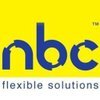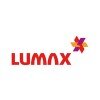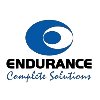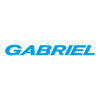Filter interviews by
SKF Assistant Manager Interview Questions and Answers for Experienced
7 Interview questions
Man power can be utilized by assigning tasks based on their skills and strengths.
Identify the strengths and skills of each employee
Assign tasks based on their strengths and skills
Provide training and development opportunities to enhance their skills
Encourage teamwork and collaboration
Monitor progress and provide feedback
Recognize and reward good performance
TPM stands for Total Productive Maintenance. It is a systematic approach to equipment maintenance that aims to maximize productivity and minimize downtime.
TPM focuses on proactive and preventive maintenance to keep equipment in optimal condition.
It involves training employees to perform routine maintenance tasks and identify potential issues.
TPM aims to eliminate equipment failures and breakdowns, leading to incre...
Kanban is a lean manufacturing system that helps manage and improve workflow.
Kanban originated in Japan and means 'visual signal' or 'card'.
It uses visual cues, such as cards or boards, to signal when work should be started or completed.
Kanban helps teams prioritize work, reduce waste, and improve efficiency.
It is commonly used in software development, but can be applied to any industry.
Kanban boards can be physic...
Scrap reduction can be achieved by identifying the root cause of scrap, implementing process improvements, and training employees.
Conduct a thorough analysis of the production process to identify the root cause of scrap
Implement process improvements such as better quality control measures and equipment maintenance
Train employees on proper handling and use of equipment to reduce errors and scrap
Regularly monitor an...
SMED stands for Single Minute Exchange of Die, a lean manufacturing technique to reduce setup time.
SMED is a process to reduce the time it takes to changeover a production line from one product to another.
It involves breaking down the setup process into smaller steps and finding ways to streamline them.
The goal is to reduce setup time to less than 10 minutes, hence the name Single Minute Exchange of Die.
Examples o...
Grinding defects refer to the problems that occur during the grinding process.
Burns
Cracks
Chatter
Glazing
Loading
Mismatch
Tearing
Grinding is the process of removing material from a workpiece using an abrasive wheel or belt.
Grinding is a common machining process used in manufacturing.
It involves removing material from a workpiece using an abrasive wheel or belt.
The goal of grinding is to achieve a smooth surface finish or to remove excess material.
Grinding can be done manually or using a machine.
Examples of grinding include surface grinding,...
SKF Assistant Manager Interview Experiences for Experienced
2 interviews found
I applied via Recruitment Consulltant and was interviewed before Jul 2022. There were 3 interview rounds.

(2 Questions)
- Q1. General understanding related
- Q2. Expected Remuneration
(1 Question)
- Q1. They evaluated my suitability for the industry and role
Interview Preparation Tips
I applied via Company Website and was interviewed before Jan 2021. There were 4 interview rounds.
Interview Questionnaire
7 Questions
- Q1. What is TPM and it benefits the organization.
- Ans.
TPM stands for Total Productive Maintenance. It is a systematic approach to equipment maintenance that aims to maximize productivity and minimize downtime.
TPM focuses on proactive and preventive maintenance to keep equipment in optimal condition.
It involves training employees to perform routine maintenance tasks and identify potential issues.
TPM aims to eliminate equipment failures and breakdowns, leading to increased ...
- Q2. What is kanban system.
- Ans.
Kanban is a lean manufacturing system that helps manage and improve workflow.
Kanban originated in Japan and means 'visual signal' or 'card'.
It uses visual cues, such as cards or boards, to signal when work should be started or completed.
Kanban helps teams prioritize work, reduce waste, and improve efficiency.
It is commonly used in software development, but can be applied to any industry.
Kanban boards can be physical or...
- Q3. What is grinding.
- Ans.
Grinding is the process of removing material from a workpiece using an abrasive wheel or belt.
Grinding is a common machining process used in manufacturing.
It involves removing material from a workpiece using an abrasive wheel or belt.
The goal of grinding is to achieve a smooth surface finish or to remove excess material.
Grinding can be done manually or using a machine.
Examples of grinding include surface grinding, cyli...
- Q4. What are the various grinding defects
- Ans.
Grinding defects refer to the problems that occur during the grinding process.
Burns
Cracks
Chatter
Glazing
Loading
Mismatch
Tearing
- Q5. How to utilize man power
- Ans.
Man power can be utilized by assigning tasks based on their skills and strengths.
Identify the strengths and skills of each employee
Assign tasks based on their strengths and skills
Provide training and development opportunities to enhance their skills
Encourage teamwork and collaboration
Monitor progress and provide feedback
Recognize and reward good performance
- Q6. What is SMED
- Ans.
SMED stands for Single Minute Exchange of Die, a lean manufacturing technique to reduce setup time.
SMED is a process to reduce the time it takes to changeover a production line from one product to another.
It involves breaking down the setup process into smaller steps and finding ways to streamline them.
The goal is to reduce setup time to less than 10 minutes, hence the name Single Minute Exchange of Die.
Examples of SME...
- Q7. How to do scrap reduction
- Ans.
Scrap reduction can be achieved by identifying the root cause of scrap, implementing process improvements, and training employees.
Conduct a thorough analysis of the production process to identify the root cause of scrap
Implement process improvements such as better quality control measures and equipment maintenance
Train employees on proper handling and use of equipment to reduce errors and scrap
Regularly monitor and tra...
Interview Preparation Tips
Skills evaluated in this interview
Top trending discussions






Interview questions from similar companies

I applied via Recruitment Consulltant and was interviewed before Jul 2021. There were 2 interview rounds.

(3 Questions)
- Q1. Basic information about current role and responsibilities
- Q2. Why you want to change the current company
- Q3. Family background and qualifications
Interview Preparation Tips

Assistant Manager Interview Questions & Answers
CIE Automotiveposted on 19 Jan 2018
Interview Questionnaire
3 Questions
- Q1. Regarding some steel grade
- Q2. Regarding ctc and date of joini g after geting of offer
- Q3. About transporting
Interview Preparation Tips
Experience: Some technical discussion regarding alloy steel making

I applied via Recruitment Consultant and was interviewed in Jan 2020. There were 3 interview rounds.
Interview Questionnaire
4 Questions
- Q1. Q1. What is MHr ? And how costing is done ?
- Ans.
MHr stands for Man-Hour. Costing is done by calculating the total number of man-hours required for a task and multiplying it by the cost per hour.
MHr stands for Man-Hour, which is a unit of measurement for the amount of work performed by an individual in one hour.
Costing is done by determining the total number of man-hours required for a specific task or project.
The cost per hour is then multiplied by the total number ...
- Q2. Q2. Current pricing of ADC 12 & plastic resins.
- Ans.
I do not have the current pricing information for ADC 12 & plastic resins.
I apologize, but I do not have the current pricing information for ADC 12 & plastic resins.
I would need to conduct research or consult with a colleague who has access to this information.
Pricing for these materials can fluctuate frequently based on market demand and other factors.
- Q3. Q3. How you do costing of Plastic & Casting parts.
- Ans.
Costing of plastic and casting parts involves analyzing material costs, production processes, and overhead expenses.
Analyze the material costs by considering the type and quantity of plastic or casting material required.
Evaluate the production processes involved in manufacturing the parts, including molding or casting techniques.
Consider the labor costs, machine costs, and energy costs associated with the production pr...
- Q4. Q4. To give you a plastic part, & you have to analyse on what machine it will run & it's tool cost.
- Ans.
To determine the machine and tool cost for a plastic part.
Analyze the dimensions and material of the plastic part
Identify the required tolerances and surface finish
Consider the production volume and lead time
Research the available machines and their capabilities
Calculate the tooling cost based on the chosen machine
Consider the maintenance and operating costs of the machine
Interview Preparation Tips
Be a gem in your area, if you don't have any answer ,show them your capabilities that you can do it when you ll be given the task.

I applied via Naukri.com and was interviewed in Sep 2021. There was 1 interview round.
Interview Questionnaire
1 Question
- Q1. All question releated to press shop and weld shop.
Interview Preparation Tips

Interview Questionnaire
1 Question
- Q1. Work in shifts, Qcc , Line balancing , Kaziens , Achievement in your experience individually and in team .

I applied via Naukri.com and was interviewed in Mar 2022. There were 2 interview rounds.
(2 Questions)
- Q1. Total Experience ,and technical knowledge
- Q2. Expected CTC, joninning date
(2 Questions)
- Q1. PLC Basic programming,VFD, SMPS,faunc,
- Q2. TPM, 5s,SAP, plant head interview about urself
Interview Preparation Tips

I applied via Approached by Company and was interviewed in Feb 2024. There were 4 interview rounds.
(3 Questions)
- Q1. Introduced your self
- Q2. What is your exp.
- Q3. What is your salary expectations
(2 Questions)
- Q1. Fully technically round by seniors person
- Q2. Need to fully technical knowledge about your experience.
(2 Questions)
- Q1. What about TPM knowledge
- Ans.
TPM knowledge refers to understanding and implementing Total Productive Maintenance practices to improve equipment reliability and efficiency.
TPM involves proactive maintenance to prevent breakdowns and improve overall equipment effectiveness
It focuses on empowering operators to take ownership of equipment maintenance
Examples include implementing autonomous maintenance tasks and conducting regular equipment inspections
- Q2. What about system knowledge.
- Ans.
System knowledge is essential for an Assistant Manager to effectively navigate and utilize various tools and technologies within the organization.
Understanding of the company's internal systems and processes
Proficiency in using software and tools relevant to the role (e.g. CRM, ERP)
Ability to troubleshoot technical issues and provide support to team members
Knowledge of data security protocols and best practices
Experien...
(2 Questions)
- Q1. What is your current salary structure & Documents submittion
- Q2. Previous experience varify from Previous company
- Ans.
I have 5 years of experience as an Assistant Manager at XYZ Company, where I successfully led a team of 10 employees.
Led a team of 10 employees
Implemented new strategies to increase productivity
Managed daily operations and ensured smooth workflow
Skills evaluated in this interview

I appeared for an interview in Sep 2024, where I was asked the following questions.
- Q1. Discussing related to TPM
- Q2. How to handle production management
- Ans.
Effective production management involves planning, monitoring, and optimizing processes to ensure efficiency and quality.
Establish clear production goals and KPIs to measure success, such as reducing lead times or increasing output.
Implement lean manufacturing principles to minimize waste and improve efficiency, like using just-in-time inventory.
Utilize technology and automation to streamline processes, such as using s...
- Q3. How to manage Cost reduction
- Ans.
Effective cost reduction involves strategic planning, process optimization, and resource management to enhance profitability.
Conduct a thorough analysis of current expenses to identify areas for reduction, such as unnecessary subscriptions or services.
Implement process improvements, like adopting lean methodologies, to eliminate waste and enhance efficiency.
Negotiate better terms with suppliers or consider alternative ...
- Q4. Explanation of plastic raw materials
SKF Interview FAQs
Tell us how to improve this page.
SKF Interviews By Designations
- SKF Applications Engineer Interview Questions
- SKF Manager Interview Questions
- SKF Assistant Manager Interview Questions
- SKF Associate Engineer Interview Questions
- SKF Finance Executive Interview Questions
- SKF Design Engineer Interview Questions
- SKF Management Trainee Interview Questions
- SKF Engineer Interview Questions
- Show more
Interview Questions for Popular Designations
- Team Manager Interview Questions
- Operations Manager Interview Questions
- Branch Manager Interview Questions
- Associate Manager Interview Questions
- Department Manager Interview Questions
- Assistant Store Manager Interview Questions
- Assistant Branch Manager Interview Questions
- Shift Manager Interview Questions
- Show more
Overall Interview Experience Rating
based on 1 interview experience
Difficulty level
Duration
Assistant Manager Interview Questions from Similar Companies
SKF Assistant Manager Reviews and Ratings
based on 29 reviews
Rating in categories
|
Assistant Manager
156
salaries
| ₹7.1 L/yr - ₹21 L/yr |
|
Deputy Manager
93
salaries
| ₹13.9 L/yr - ₹21 L/yr |
|
Key Account Manager
74
salaries
| ₹9 L/yr - ₹26.7 L/yr |
|
Production Engineer
70
salaries
| ₹1.9 L/yr - ₹5 L/yr |
|
Area Sales Manager
50
salaries
| ₹12.1 L/yr - ₹20 L/yr |

JBM Group

Subros

Endurance Technologies

Spark Minda
- Home >
- Interviews >
- SKF Interview Questions >
- SKF Interview Questions for Experienced














